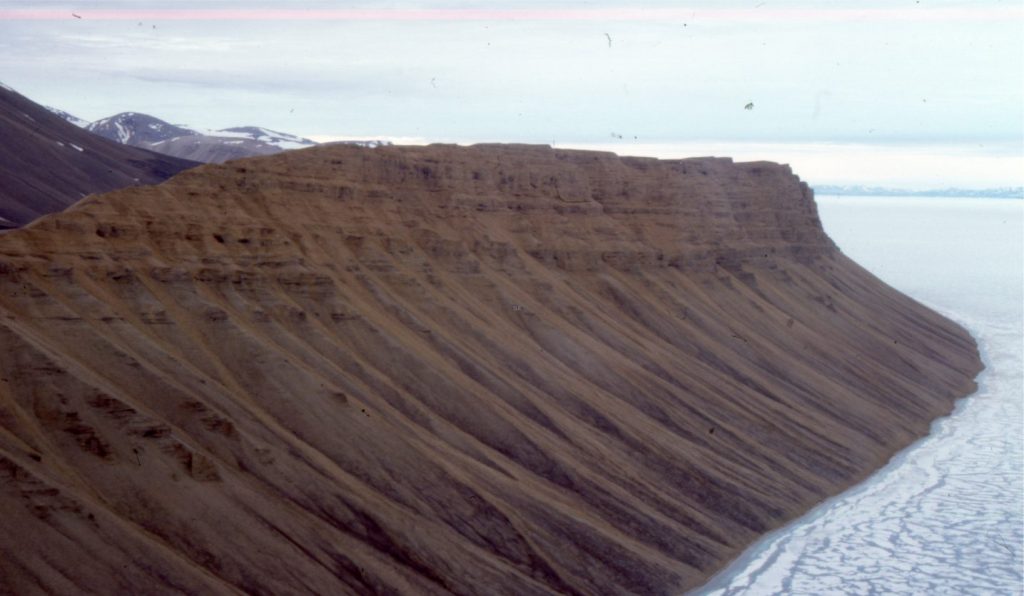
Colluvium – the source for most of Earth’s alluvium
Colluvium is a sedimentary deposit that occurs as a thin layer over much of Earth’s terrestrial surface. Colluvium deposition is dominated by hillslope processes where the dominant force is gravity. Deposits are commonly gravelly, poorly or unsorted, and non-stratified. Colluvium mantles bedrock and unconsolidated sediment alike. It is the ultimate source for most of Earth’s terrigenous, alluvial sediment.
The following historical notes are taken from an excellent review and summary by Miller and Juilleret (2020).
From an Earth science perspective there is a close spatial relationship between colluvium and alluvium – most alluvium is derived from colluvium. However, the fundamental differences between the two types of deposit are often blurred by historical and recent usage. Both terms have been in use at least since the 17th century. To this day, alluvium has consistently referred to the transport and deposition of sediment in flowing water. Channelized flow is frequently invoked, but modern usage includes sheetflood and sediment gravity flows, particularly debris flows that contribute coarse-grained sediment to alluvial fans.
Early use of the term ‘colluvium’ was reserved for soils and less palatable deposits such as garbage and sewerage. The intervening three centuries have seen changes in the meaning of the term, dispensing with the less desirable qualities but assuming more regional differences. During the 19th century it was also subsumed by an ecclesiastical term – diluvium.
Before Darwin’s opus and despite the published, rational theories espoused by James Hutton and Charles Lyell (early 1800s), the term diluvium was widely used by English, European, and North American geologists to describe the unconsolidated mud, sand, and gravel overlying bedrock. Deposition of diluvium was ascribed to the Noachian deluge. Those promoting the diluvium concept also identified water-laid alluvium as a separate and younger stratigraphic unit. The biblical roots of diluvium were inextricably linked to the widely held 19th century view of Earth’s age, calculated by Bishop Ussher at 4004 BC (or BCE). The term lost its popularity over the later decades of the 19th century as burgeoning geological observation and theory demanded different modes of thinking. For example, deposits identified as diluvium in Europe and Britain were reinterpreted as glacial drift.
The meaning of colluvium during the latter half of the 19th century had morphed to a combination of alluvium and diluvium. By the end of the 19th and beginning of the 20th century the scientific community (but not the creationists) had largely divested itself from the diluvial concept. At this time there were several definitions of ‘colluvium’, but two main streams of thought prevailed, streams that persist in 21st century definitions.
Modern usage
Two main depositional processes dominate modern definitions of colluvium:
- Mass wasting, usually on hillslopes, where the primary mover of sedimentary fragments is gravity. Hillslope processes in include rockfalls, landslides, creep, freeze-thaw, and solifluction.
- Slope wash by discontinuous, non-channelized sheet flow of water during precipitation events and spring thaw.
Common definitions of colluvium that emerge from these two processes are summarized in the table below – modified from Miller and Juilleret, 2020, Table 1 (see link above). The definitions tend to use one or combinations of both depositional processes.
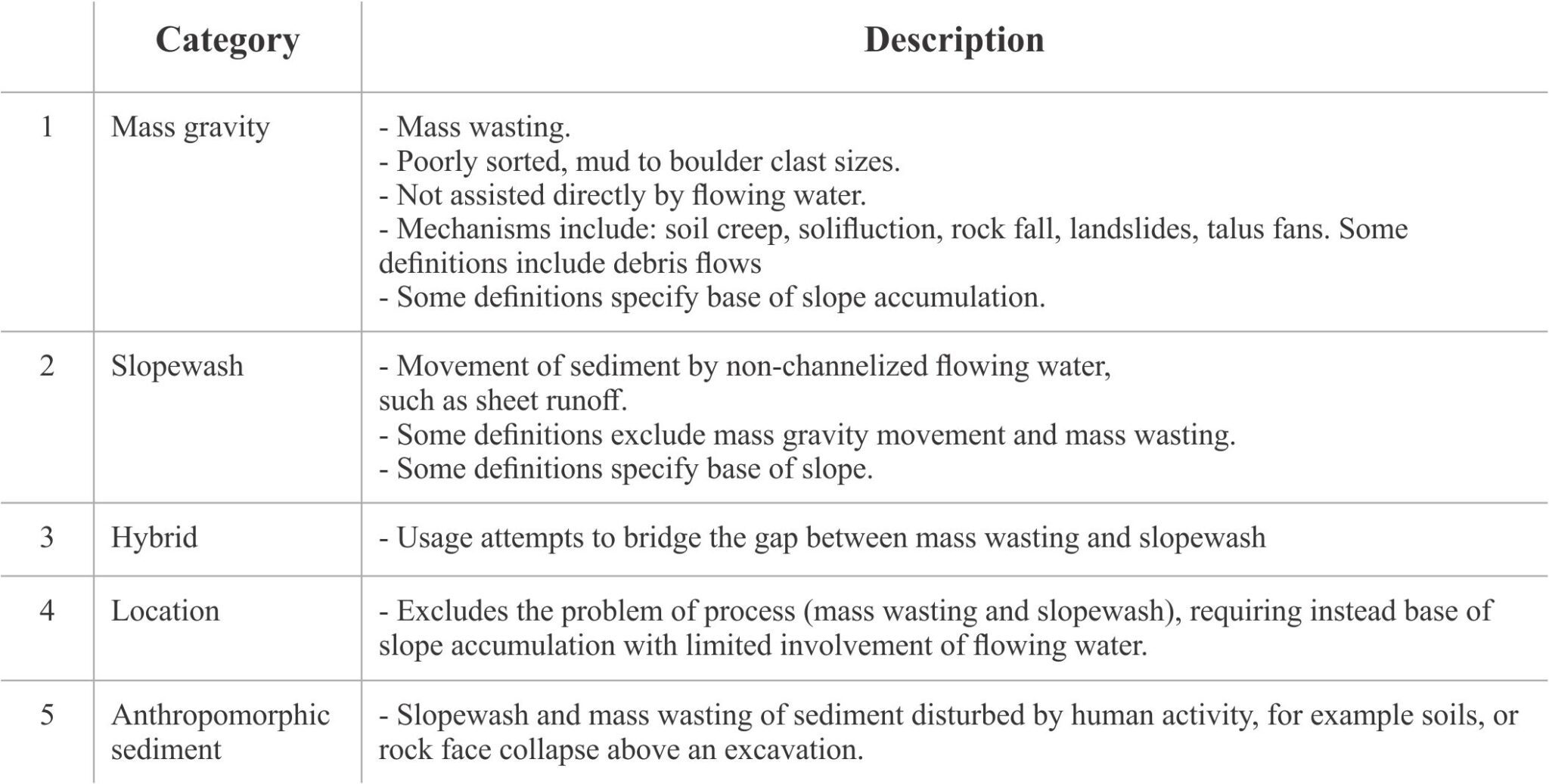
The differences among these categories depend very much on how the term colluvium has and is being used, geologically and/or technically.
In the absence of a single all-encompassing definition, Miller and Juillerete suggest the following criteria be used to “structure” future definitions:
“Colluvium = Transported regolith formed by the accumulation of clastic sediments by mass-gravity movement where water can function as a lubricant. Deposits exhibit heterogeneous particle sizes that frequently include angular fragments of rock, poor sorting, and little to no stratification. Usually found on slopes and at their bases.”
Colluvium lithofacies
Some examples of what I think constitute colluvium lithofacies are shown below. They emphasise the heterogeneity of the sediment, sediment texture, and absence of stratification. The examples include slope and base of slope colluvium derived from mass wasting, slope wash, and gravitational creep, but do not include sediment gravity flows.
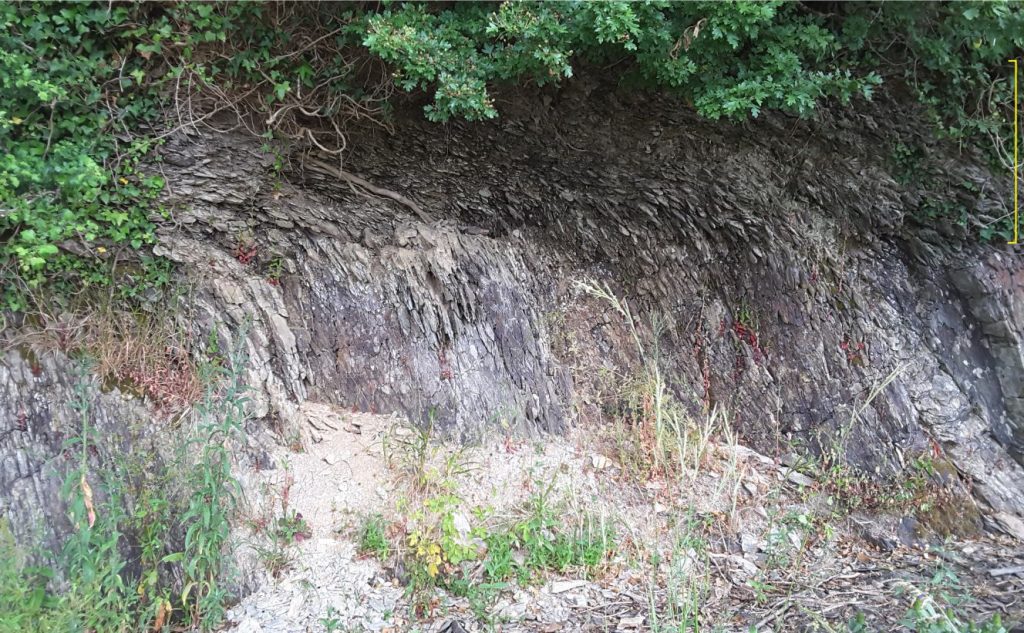
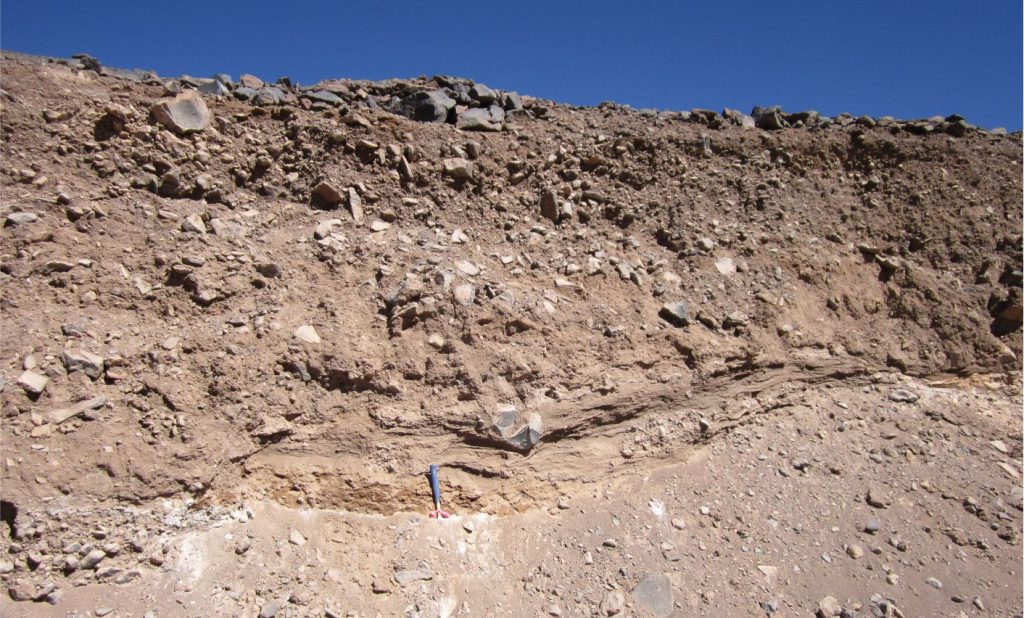
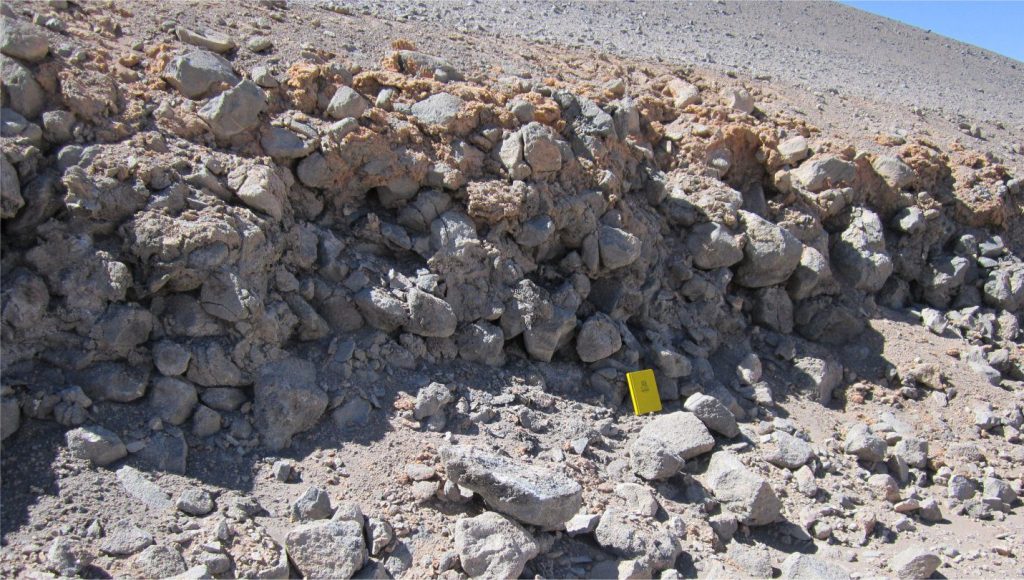
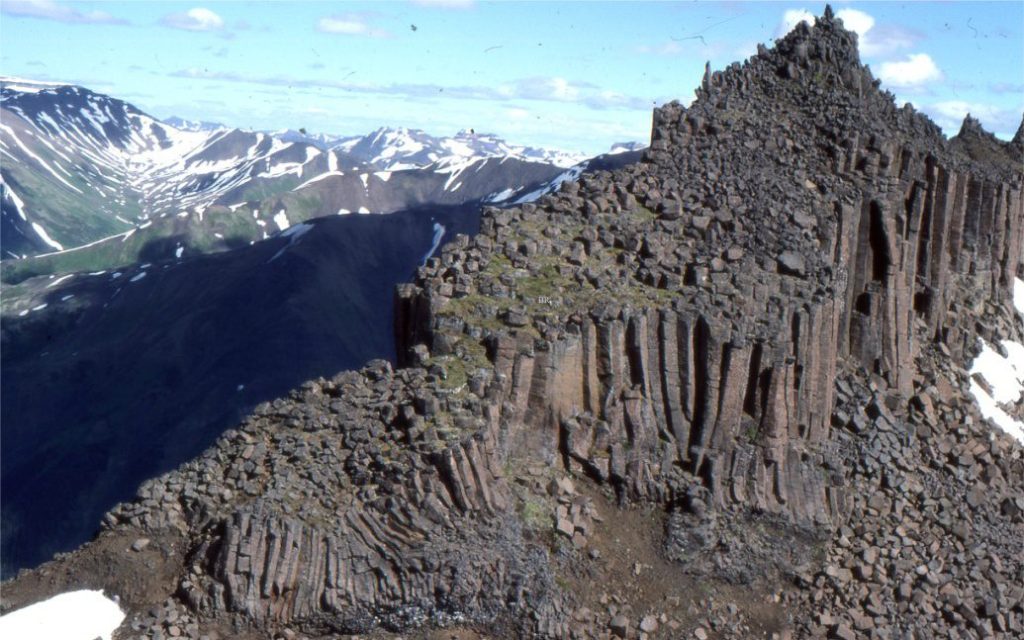
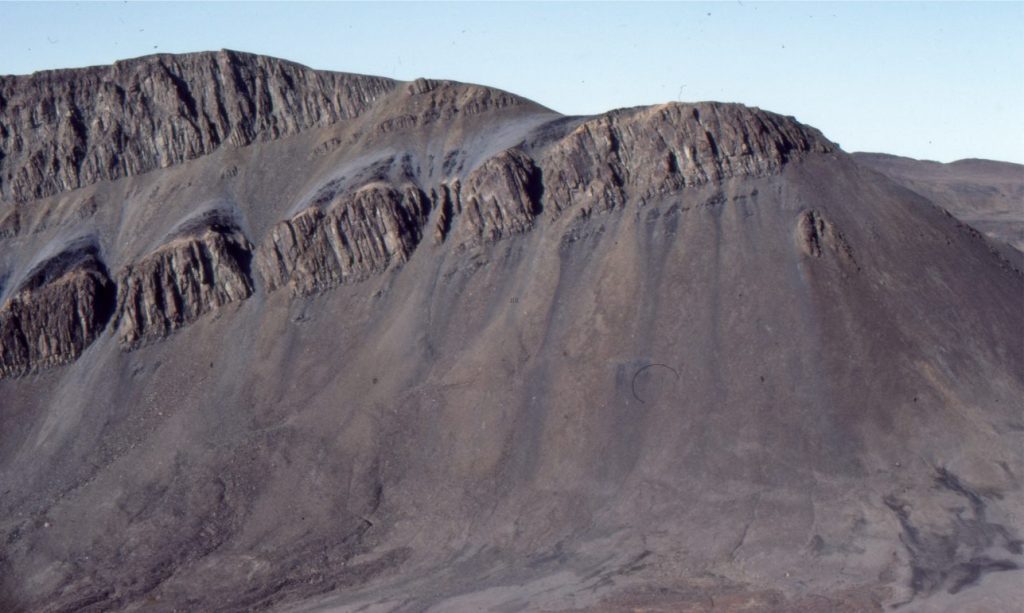
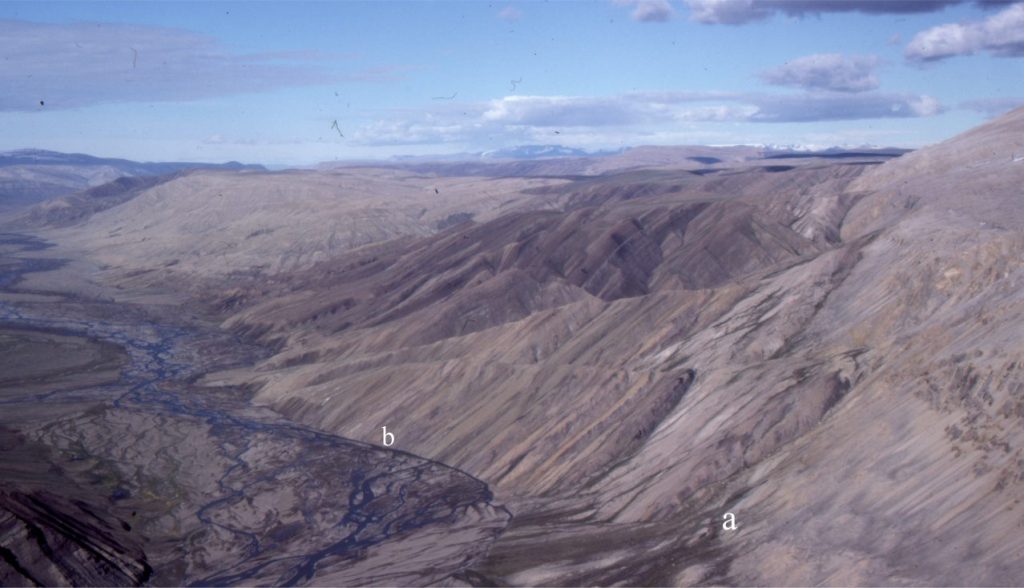
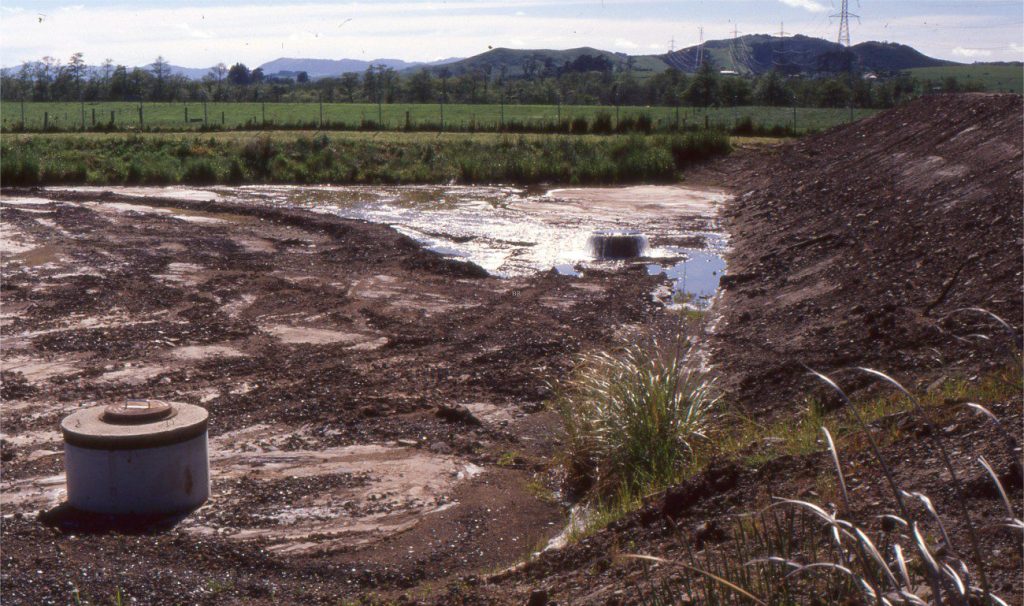
Other posts in this series on lithofacies
Sandstone lithofacies
Sedimentary lithofacies – An introduction
Ripple lithofacies: Ubiquitous bedforms
Ripple lithofacies influenced by tides
Tabular and trough crossbed lithofacies
Laminated sandstone lithofacies
Low-angle crossbedded sandstone
Hummocky and swaley cross-stratification
Lithofacies beyond supercritical antidunes
Subaqueous dunes influenced by tides
Gravel lithofacies
Introducing coarse-grained lithofacies

















